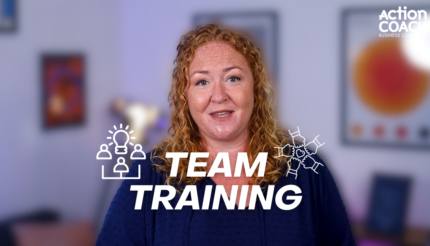Tuckman’s Team Development Model is used to help business owners build the best team within their business. It focusses on uniting a diverse group of individuals, with a range of personality types (like those identified in DISC), to get the best out of each team member and benefit the business. By understanding the different ways in which people work and interact you can mould an effective team dynamic even if the individuals seem very different on the surface.
What are the different stages of Tuckman’s Team Development Model?
Forming
The first stage is Forming. This is when the team are first introduced to one another. Typically, some people will be energised by the prospect of working with new people, whilst others may find it a bit daunting. If you think about your own experience working with others, you’ll probably be able to think of people that fit each of these categories.
Given the new relationships, the focus at this stage should be on building stronger bonds, establishing trust, and clarifying expectations. As such, there will be an emphasis on orientation (socialisation), and a dependency on the group leader for guidance.
Role of the leader: Leadership is vital at this stage for communicating goals, roles, and expectations for the project.
Storming
Once the team has got to know each other a bit more, and as the project moves forward, it is natural for there to be some disagreements and challenges. Different personalities may clash, and efficiency will probably decrease as a result.
This stage will typically involve establishing roles within the group, active discussion between team members, and – despite possible conflicts – improved cohesion by successfully overcoming challenges.
Role of the leader: As a leader, you need to help your team move through their disagreements and encourage teamwork. This will help the team become more cohesive and understanding of one another.
Norming
Now the team have a better understanding of each other’s strengths and weaknesses, they will begin to work naturally together. At this stage, you need to make sure that the team keeps progressing.
You should see greater collaboration between individuals as they understand the strengths and weaknesses of one another, shared values and expectations, greater trust and support, and a sense of identity within the team.
Role of the leader: As the team get on with each other more they may become distracted, so just keeping them on track is all you need to do!
Performing
With slick, smooth processes and a great working relationship, your team will be performing at the top of its game. The team can move past disagreements to keep progressing in a healthy and sustainable way.
The team will be intently focused on successfully achieving the task at hand, with a shared appreciation of the team’s collective abilities and the ability to make decisions as one. Teams performing like this will continually improve by reflecting on their processes and performance and help one another to improve.
Role of the leader: Leaders act as guides in this stage, providing advice when needed and ensuring goals are met.
Adjourning
Once the team has completed its work, there can be some conflicting emotions. They will hopefully feel proud of their work, but they could also feel a bit deflated if they are no longer working with people they formed great relationships with.
Role of the leader: Your role as a leader is to praise the team for their success – or analyse what didn’t go so well – and to support the team to keep progressing in the future.
What do you think about this model of team development? Have you noticed similar patterns within your own team? And could you use this model to help with team building in the future.
View my team training programme.





